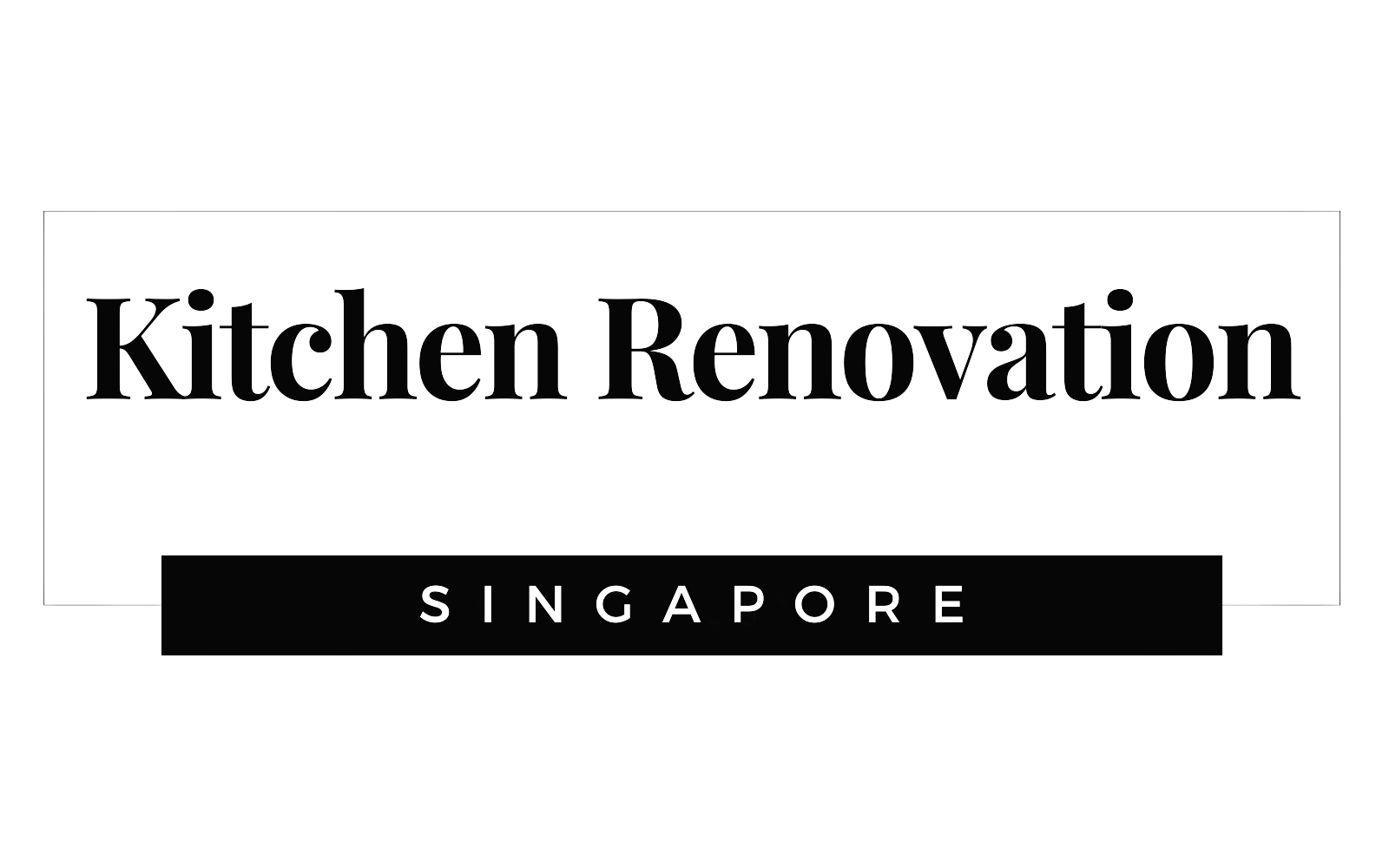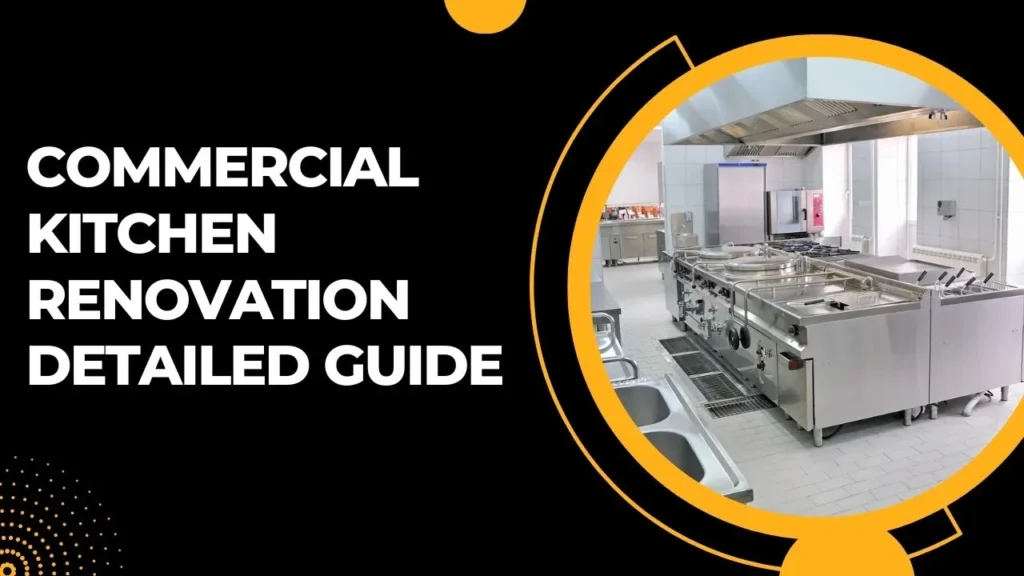
Commercial kitchen renovation in Singapore can breathe new life into your food business. Whether you run a restaurant, cafe, or other food establishment, upgrading your existing industrial kitchen presents a major opportunity to improve efficiency, safety, and profits.
As you consider a commercial kitchen remodel, it’s important to carefully evaluate your needs and budget while planning for the future of your business.
The commercial kitchen renovation cost represents a significant investment, with typical prices ranging from $100 to $500 per square foot depending on the scale and scope of the project.
You may be considering a renovation to replace outdated or faulty equipment, gain more capacity, or implement the latest technology. The right Kitchen upgrade can allow you to expand your menu, serve more customers, cut costs, and keep up with changing regulations.
Maximizing workflow and layout during a kitchen remodel can also boost productivity. With some thoughtful planning focused on your business goals, a renovated commercial kitchen can be a worthwhile investment for your restaurant or food company.
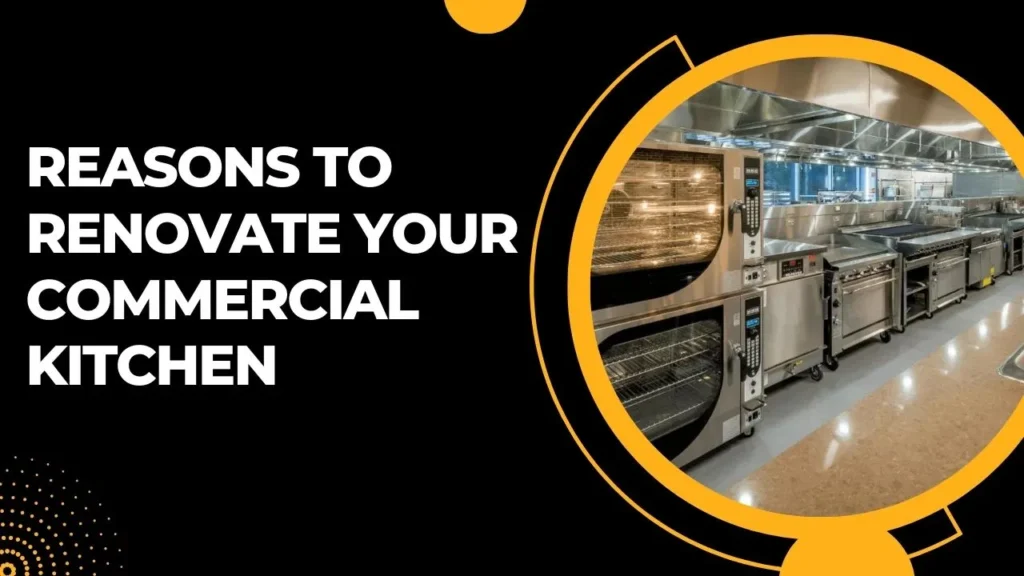
Reasons to Renovate Your Commercial Kitchen
As the heart of your operations, an updated, efficient commercial kitchen design ensures you can keep serving great meals for years to come. If you’re wondering whether to renovate your commercial kitchen, here are some top reasons to take the leap.
Boost Efficiency and Output
An outdated commercial kitchen layout can seriously hamper productivity and output. By renovating and reconfiguring your cooking stations, cold storage, dishwashing, and prep areas, you can streamline workflows.
This enables your staff to produce more menus and dishes in less time. Key elements like wider aisles, additional burners or commercial kitchen ovens, and smarter storage solutions make all the difference. With a commercial kitchen makeover focused on efficiency, you’ll be surprised how much more your existing staff can handle.
Lower Operating Costs
From heating equipment to appliances and lighting, an aging commercial kitchen guzzles gas and electricity. By upgrading to modern, energy-efficient equipment like convection ovens, refrigeration units, LED lighting, and more, you can realize major utility savings year after year.
New commercial grade appliances also require fewer repairs over time, saving you money. Plan your restaurant kitchen renovation around sustainability for lower monthly overheads.
Implement Labor-Saving Technology
From advanced cooking gadgets to inventory management software, new foodservice technologies abound. Remodeling lets you build these into your operations for less reliance on manual labor.
For example, adding automated food processors, batter dispensers, and portioning machines can save hours of tedious prep work every day. With a commercial kitchen upgrade focused on automation and technology, you can operate more profitably while keeping labor costs in check.
Improve Food Safety & Hygiene
A commercial kitchen renovation allows installing fixtures and layouts focused on compliance and cleanliness. This includes additional sinks, seamless surfaces, epoxy flooring, and heating/cooling zoning for strict temperature control.
An NSF-certified consultant can advise the best ways to avoid contamination risks. By remodeling with strict health codes in mind, you take a proactive stance on food safety from the ground up. This keeps staff and customers safe while minimizing the likelihood of failing inspections.
Refresh Your Brand Image
Don’t underestimate the impact even a cosmetic commercial kitchen remodel can have. Dining guests notice an attractive, orderly kitchen visible from the front of the house.
Meanwhile, prospects touring your facility see your back-of-house investment on display. Even if equipment still performs adequately, dated decor makes a poor impression that your food quality also lacks care and creativity. Remodeling delivers a modern look and feel that says your business cares about every detail.
As your most vital workspace, it pays to keep your commercial kitchen in peak operating condition. Evaluating renovation return on investment requires balancing improved output, cost savings, innovation capabilities and brand image against upfront costs.
For most food businesses, however, remodeling pays clear dividends across key performance metrics. Partner with a professional kitchen design/build firm for ideas and guidance specific to your needs and budget.
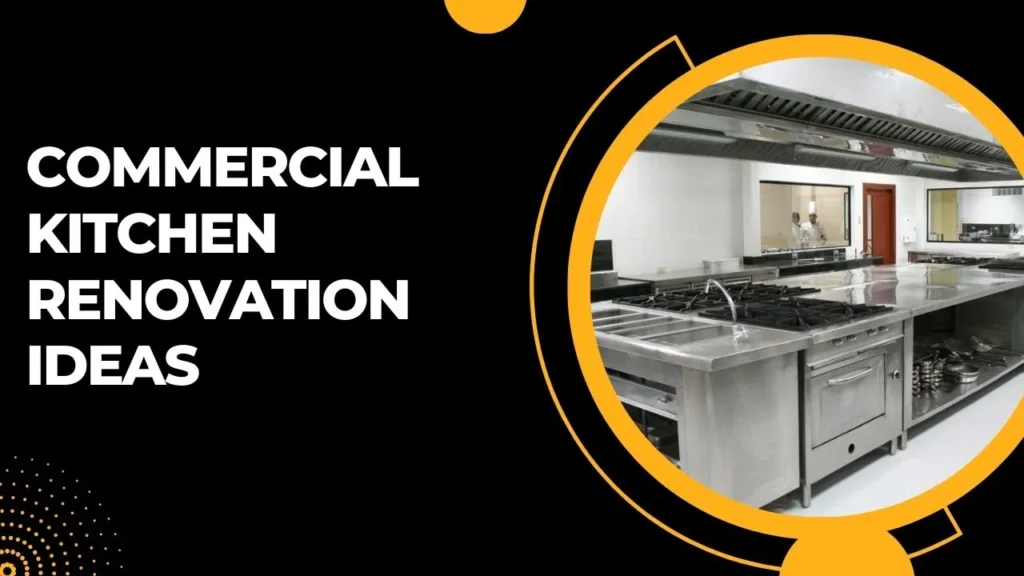
Commercial Kitchen Renovation Ideas
When planning a commercial kitchen renovation in singapore, the possibilities are endless for upgrading your workspace. From minor layout tweaks to major equipment additions, you have ample opportunity to customize for efficiency, workflow, and output needs. If you’re seeking inspiration, here are some smart commercial kitchen remodel ideas to consider:
Streamline Stations
Evaluate how each cooking station currently functions and how their placement affects staff movement between them. Redistribute stations and Commercial kitchen equipment to form intuitive prep-to-plate assembly lines.
Insert extra lengths of countertops or tables where helpful to give employees more room. Also, ensure adequate aisle space for multiple staff to pass simultaneously. Opening up the kitchen improves communication and allows chefs to hasten service.
Expand Cold Storage
Having ample refrigeration capacity eliminates ingredient spoilage and lets you prep more dishes in bulk. Adding another walk-in cooling unit or several reach-in refrigerators can make a huge difference.
Insert additional undercounter refrigerator and freezer drawers directly at stations to keep commonly accessed items close. Increased chilled storage capacity improves menu capabilities and prevents overwhelmed units that waste energy.
Install Automated Equipment
Labor-saving commercial kitchen appliances introduce game-changing functionality into commercial kitchens. From combination ovens to ventless commercial kitchen hoods and automated fryers, advanced equipment streamlines cooking, ventilation, oil handling and more.
Target appliances which handle your most frequent and tedious tasks for employees to focus on culinary skill. Be sure to consult equipment ratings to see if current electrical, gas or plumbing supply meets demands.
Improve Ventilation & Fire Protection
Proper commercial grade ventilation keeps kitchen air breathable while adequately removing grease, smoke and steam. Evaluate adding more hood vents strategically over high-output equipment like ranges, broilers and fryers.
Install additional roof venting for supplemental heat and contaminant exhaust. Also, upgrade fire-suppression systems to cover all cooking areas, using wet chemicals instead of CO2 for safer operation. Refresh other fire-code measures like hood filters, extinguishers and emergency gas/power cut-offs.
Incorporate Technology
Smart kitchen tech expands capabilities and allows smaller staffs to achieve more. Touchscreen interfaces can control and monitor combo steamers, commercial microwaves, holding cabinets and more.
WiFi-enabled appliances further enable remote adjustment and tracking. Inventory management software centralizes ordering, recipes, and reporting for simplified purchasing and cost control. Tablet-based menu and POS systems including online ordering also integrate directly with back-of-house operations.
Install Durable, Sanitary Countertops
The countertop material you choose needs to withstand heavy daily use. Laminate and wood surfaces dent and stain easily in professional settings. For superior durability, hygiene and heat resistance, consider natural stone, stainless steel or commercial-grade solid surface. You should keep right kitchen countertops remodeling in mind while doing it.
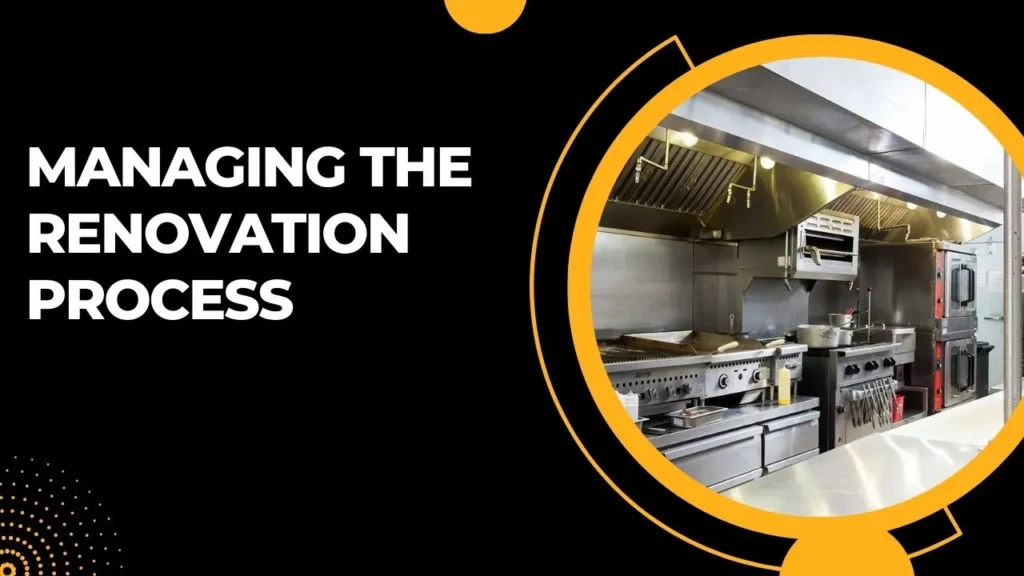
Managing the Renovation Process
A commercial kitchen renovation brings sizable disruption to daily operations. With some projects spanning weeks or months, temporarily losing access can seriously impact revenue and staff retention.
Careful planning and phasing of the remodel makes the process smoother for everyone. Here’s how to orchestrate renovation moving parts while minimizing business impact:
Consult Experts Early On
Ideally engage an experienced foodservice design consultant during initial renovation scoping. They can advise on project phasing, suggest workarounds to limit downtime, and coordinate equipment deliveries and installations. You can also hire a Professional commercial kitchen contractor for your project.
Be ready with a general project budget and your most-wanted layout changes and equipment upgrades. They can map realistic phases aligned with your business calendar.
Schedule Off-Peak
Aim to schedule the bulk of demolition, construction, and installations during your slowest revenue periods. For many restaurants and catering businesses, January through March provides an ideal renovation window after the holidays.
However, schedule several months for complex projects, allowing for inevitable delays. Be prepared to close entirely 1-2 weeks if full kitchen access is unavoidable. For operations with steadier year-round traffic, consult your point-of-sale data to determine historically slower months.
Lease Temporary Facilities
Relocating some food production and storage offsite preserves revenue streams during renovation. This avoids full-on closure by keeping limited menus available. Modular commercial kitchens and refrigerated container rentals offer viable temporary facilities.
Ensure proper permitting, and have staff transport ingredients and dishes safely to your main location for finishing and service. Going modular involves coordination but prevents major business disruptions.
Partition Phases
Structural changes like moving walls obviously require total kitchen closure during that phase. Yet many other renovation elements like installing new commercial grade equipment or flooring can be partitioned off, allowing partial kitchen operation around the work.
Schedule noisier, more hazardous demolition and construction work overnight. Strategic partitioning isolates zones, helping staff work around activity and equipment can go live as soon as installed. Just be sure to maintain safety walkways and exits throughout.
Communicate Changes
Keep staff and customers looped in on timeframes for renovation phases, area access, and any menu limitations. Signage on-location, plus website and social media updates preempt customer inconvenience, while ensuring staff know schedules for temporary work zones or offsite kitchens.
Share progress to generate excitement for the improvements coming. This further motivates staff through the disruption knowing it will greatly improve their workspace.
Technology Integration
A commercial kitchen renovation allows rethinking how technology can improve your workflows, reporting, and capabilities.
For software, ensure you have server capacity and secure networking to protect any smart cloud-based solutions. By working closely with kitchen renovation contractors who specialize in integrating these technologies, you can ensure that your systems are optimized for efficiency and effectiveness
Tablet-based menu management, online ordering/delivery integrations, payroll, scheduling and inventory management programs all rely on robust digital frameworks. Install hardware like barcode scanners, label printers and touchscreen terminals to make usage seamless.
On the Commercial grade equipment side, programmable, self-monitoring appliances like combination ovens, steamers and holding cabinets should link into networks
Post-Renovation Maintenance
Protecting your sizable commercial kitchen renovation investment requires diligent maintenance moving forward. Establish cleaning and preventative maintenance schedules for appliances, plumbing, facilities and more.
Train staff on proper equipment use, cleaning and reporting issues promptly to avoid malfunctions. Schedule deep cleaning during off-hours for floors, surfaces and hood ventilation. Follow grease trap cleaning protocols.
Contract preventative specialist services annually/semi-annually for HVAC optimization, fire suppression inspection, rodent control and major appliance servicing to catch problems early. Log equipment issues for repair/replacement before lack of redundancy causes bottlenecks.
Update maintenance logs, manuals and parts inventories kept on-hand. Digitize documentation with photos for visual reference. Continue small improvement projects during off seasons over years, using slower periods to refresh, rearrange and continue optimizing your kitchen.
Compliance and Safety
Any renovation must account for the many strict operational and safety codes involved. From construction materials to permanent fixtures and layouts, ensure compliance with state health, foodservice, plumbing and electrical regulations. Apply for proper permitting for structural changes, utility tie-ins and necessary inspections.
Update existing or install additional emergency systems like automated fire suppression, eye wash stations, floor-level lighting, and emergency shut-offs for gas and electric lines.
Ensure proper fire rating, sealing and self-closing mechanisms on doors, walls and egress paths.
Install health code-compliant finishes that are non-porous and easily sanitized like stainless steel, FRP panels or epoxy coatings. A reputable kitchen designer handles regulation adherence and ensuring inspectors sign off on all compliance measures.

FAQs
What’s the typical cost for a commercial kitchen renovation?
You can expect to invest $100 to $500 per square foot depending on the project scale, equipment upgrades, and any electrical or plumbing work needed.
How disruptive will a kitchen remodel be for my restaurant?
Disruption ranges from closing sections to full shutdowns during phases, depending on whether you’re moving walls, allowing noisy overnight work, or can temporarily shift some prep offsite.
What renovations give me the best return on investment?
Focus your investment on equipment improving productivity, output quality and safety – expanded storage, automated cooking tech, ergonomic stainless steel fixtures, ventilation and flooring upgrades.
Should I renovate sections over time or all at once?
That depends on your industrial kitchen renovation budget, growth plans, current layout issues and equipment condition. Gradual upgrades between busy seasons allow incremental improvements.
What inconvenience can my staff and customers expect?
Set clear expectations on the areas and times affected. Emphasizing streamlining now means faster service post-renovation. Update progress to keep staff motivated through changes.
If you enjoyed this article, then you might want to check out our detailed guide on Condo kitchen remodeling in Singapore. It will provide an in-depth look at everything you need to consider when renovating your kitchen.
